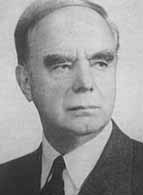
|
In the 1920s the German engineer, Anton Flettner (1885-1961).
developed a method of ship propulsion based on the Magnus effect (H. G. Magnus,
1802-1870). In this effect, a spinning, axially-symmetric object in an air-stream
develops a force perpendicular to the direction of the air-flow. This is
the basis for the curved path of a baseball thrown with a spin.
Flettner built ships with one, two and three rotating
cylinders. The picture above shows the Baden-Baden in New York Harbor
after its arrival on May 9, 1926. The two hollow cylinders were 50 ft high,
and were rotated with electric motors. Since the power to propel a ship varies
as the cube of its speed, the 50 hp used for this auxiliary propulsion system
represented a large increase in fuel efficiency. The stereoscopic
card is in the Greenslade Collection. |
REF: Thomas B. Greenslade, Jr., "A Forgotten Magnus Effect Demonstration",
The Physics Teacher,
9, 43-44 (1971)